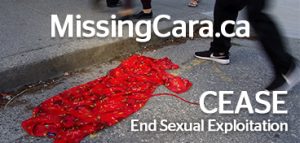
Today, the Monday of Heritage Day weekend, I forgot it was a civic holiday rather than a Stat holiday until a service man rang the doorbell. Of course, it was a civic holiday and my mind flooded with memories from twenty-one years ago.
In 1997, the first Monday was August 4th. I was employed by a private agency at the time so worked the holiday. I remember coming home late after looking for my daughter for our usual Monday evening together. I was annoyed and worried the week before as I’d been unable to contact her. It was not unusual for her to disappear for a few days at a time, sometimes staying with her boyfriend and other times couch surfing goodness knew where. Such was the life of a troubled young woman caught in the world of drugs and mental illness. She had called on Saturday from the women’s shelter but I was unable to meet her as we had company. I called back Sunday but was informed she had not returned.
It was our pattern to meet on Mondays. I would usually buy us supper, attend to what medical needs I could, sometimes buy groceries for the week, or perhaps shop for incidentals such as clothing and toiletries. It is a terrible reality to have a child descend into the shadow world of addiction and exploitation. They can not be left unattended so are at the mercy of shelters and drop-in centers around the city, often the prey of dealers. As one survivors explained, “where there are drugs, there is sex.” Young people, caught in the murky sub-culture of immediate gratification, sometimes trade their bodies for temporary highs.
My daughter lived in a world where I could not follow and she seemed equally unable to return to mine. “Why can’t she live at home?” people would sometimes ask. Because I was employed and trying to live a “normal” life, I had no tolerance for strange visitors at all hours of the day and night. She had no discernment or control over her so-called friends and they had no respect for my home.
Mondays evenings were our life-line. In the middle of her chaotic and unpredictable lifestyle, she seemed able to let me know where she would be on Mondays, show up clean and sober, and we would spend the evening together. “What more could I have done?” is a question shared by many parents of addicted children. I see variations published in the media. Some, who have money, spend $1000s or more on treatment programs. Another mom gave “her last $200” for her daughter’s transportation to a facility in another city. Her daughter disembarked half-way to her destination.
This Monday, twenty-one years ago, 1997, marked the beginning of another stage of hell. As the days stretched on without hearing from my daughter, I found my eyes constantly probing highways and ditches in search of clues. I wondered how long I could survive without knowing, as many families across Canada are forced to do.
It is the nature of society to create institutions to deal with situations beyond the scope of the family. We have schools for children, hospitals for the ill, legislatures to create laws, and police to help protect public safety. The addicted and exploited are often over-looked and fall into the gaps between illness and irresponsibility. The focus of my website is to give credit to the many agencies who serve them and to encourage a wider range of response.
As we celebrate the diversity of our culture on Heritage Day, consideration must be given to those across all cultures who have been victimized by addictions and exploitation. They deserve compassion, accommodation, and preservation of their human rights even if they fail at treatment. Families deserve to know their loved ones have options. At the same time society deserves greater protection from the dealers and traffickers who prey on the vulnerable.
